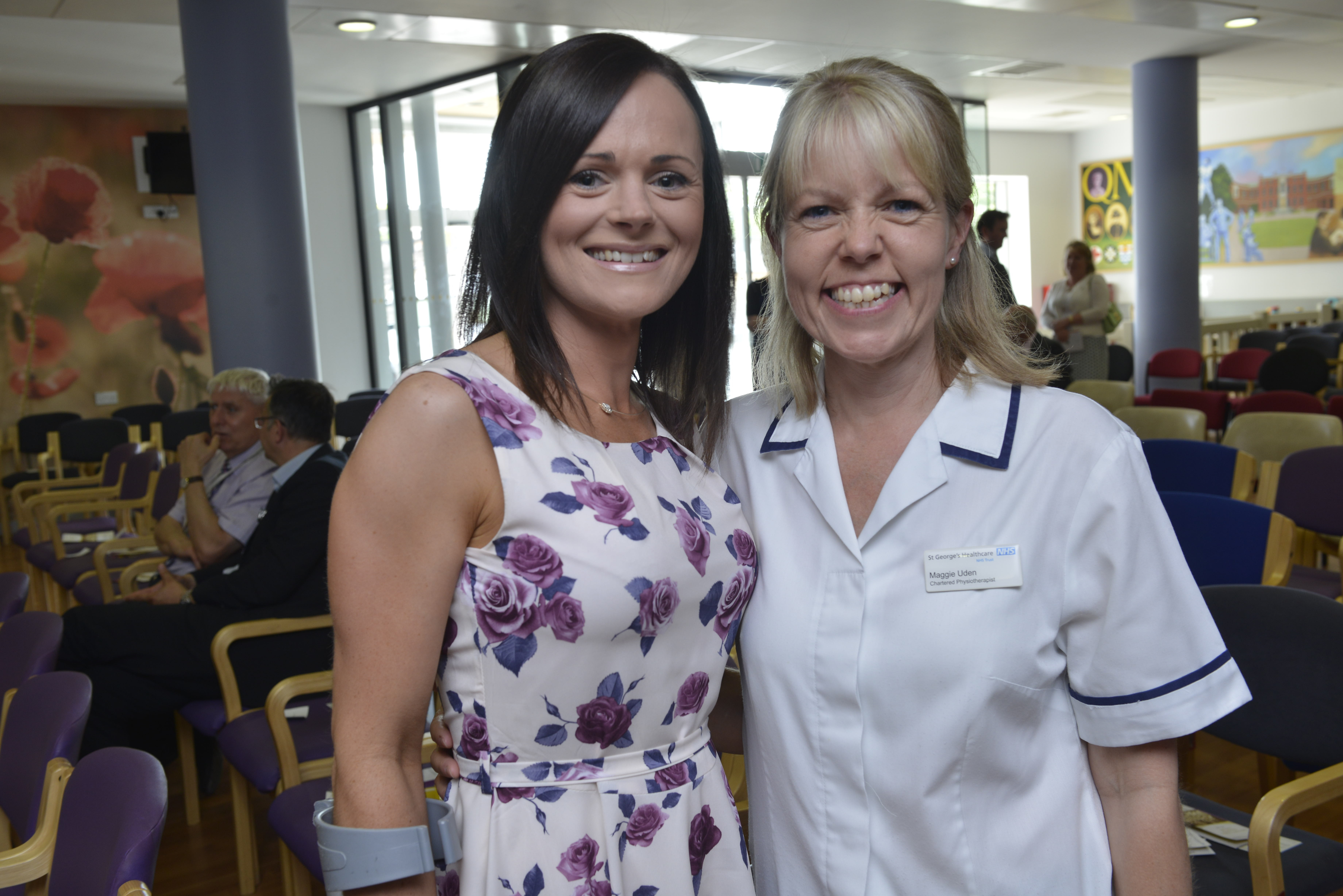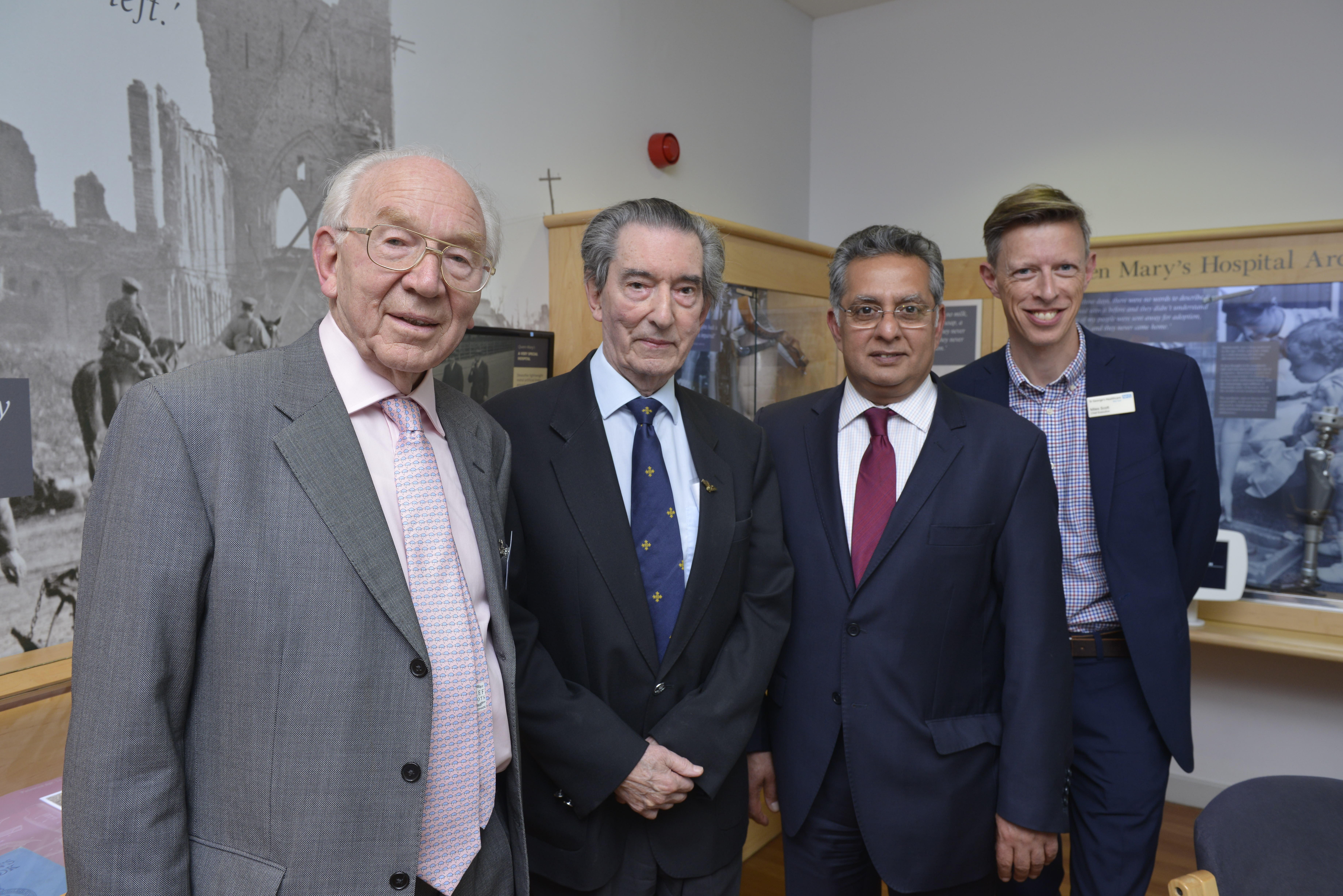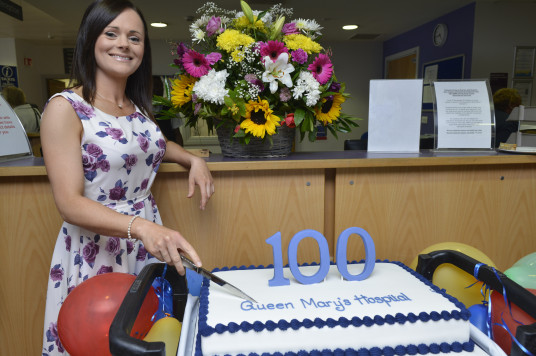New exhibition unveiled at Queen Mary’s to mark centenary year
Patients and staff from down the years gathered at Queen Mary’s Hospital, Roehampton yesterday for the opening of a new exhibition celebrating the hospital’s rich history.
Since its foundation in 1915 as a hospital for soldiers who had lost limbs in The First World War, QMH has forged a reputation as a world-class centre for the rehabilitation of amputees.
Over the past 100 years specialists at the hospital have treated Royal Air Force (RAF) fighter pilots, thalidomide babies and a 7/7 London bombing victim turned British Paralympian.
Gemma Trotter, who had a below the knee amputation as a teenager, was one of the patients who returned to Queen Mary’s for the opening of the exhibition and to cut a celebratory 100 year birthday cake.
Gemma, who since her rehabilitation at Queen Mary’s has had a successful career as a fitness instructor, said:
“I have been a patient here since I was 16 – I’m 32 now and this place has always felt like home.
“I’m so grateful to be part of the day and it really is a comfort coming here. There’s nothing the staff won’t do to help.
The exhibition was officially opened by Wandsworth Council leader Ravi Govindia and Sam Gallop CBE, a former RAF fighter pilot and double below-knee amputee, who has become a committed national and international ambassador on issues surrounding complex disability, particularly limb loss.
Sam said: “When I first arrived at Queen Mary’s in 1944 I was immediately struck by the expert care and positive encouragement that all patients received from members of staff and volunteers.
“Queen Mary’s has always been, and will continue to be, a true centre of excellence healing bruised bodies and minds and restoring people with grievous injuries to the highest possible quality of life”.
Councillor Govindia said: “It is an honour to be asked to open this exhibition that highlights and celebrates the hugely important role that Queen Mary’s has played in the history of the NHS and also in the story of Wandsworth over the past 100 years.
“The pioneering and truly invaluable support it has offered to so many people to help them overcome the enormous challenges they have faced is a remarkable achievement and testament to the hard work, skill and dedication of all those who have worked there since its work began rehabilitating some of the First World War’s most seriously injured casualties. It is a truly inspiring place and one we are proud to work alongside.”
The new exhibition, created by the Queen Mary’s Hospital Archive and Museum Group, features five iPads that explore in depth some of the amazing patient stories and pioneering medical developments during the hospital’s history.
Gordon Jones, chairman of the group, said: “The Archive & Museum Group’s mission is to maintain awareness of the hospital’s distinguished reputation past and present.
“The centenary exhibition makes use of pictures, prostheses and personal histories as well as three large-scale murals that create interactive and visually stunning exhibition for patients and visitors alike. More than 20 volunteer members of the Group have been involved and we are very pleased with the result.”
Miles Scott, chief executive of St George’s University Hospitals NHS Foundation Trust, also spoke at the event, and said:
“This new exhibition is a fitting testament to the pioneering medical developments and skilled care that has taken place at Queen Mary’s over the past 100 years.
“St George’s is proud to provide services at a hospital with such a rich historical tradition and we look forward to continuing our work with Queen Mary’s to deliver positive outcomes for our patients in the coming years.”
Notes to editors
• Queen Mary’s sees over 130,000 patients a year and offers more than 60 services, which are provided by St George’s University Hospitals NHS Foundation Trust, Kingston Hospital NHS Foundation Trust, Chelsea & Westminster Hospital NHS Foundation Trust and South West London & St George’s Mental Health Trust.
• Services offered include rapid outpatient diagnostic facilities, community mental health services, neuro-rehabilitation, limb-fitting, cancer screening and treatment, burns dressing, dermatology, children and families nursing and a Day Case Unit offering endoscopy and urology diagnostics.
• The Douglas Bader Rehabilitation Unit is located on the lower ground floor and is an established international centre of excellence and a national leader in the field of research and development of rehabilitation techniques.
• The hospital also has a Minor Injuries Unit, which last year saw 16,500 people come through its doors to be treated by an emergency nurse practitioner. The unit is open every day of the year offering treatment and advice on a wide range of injuries and illnesses, and has established itself as a cornerstone of the Roehampton community thanks to its efficient and friendly service.
• As well as offering outpatients services, Queen Mary’s has 20 beds in the rehabilitation centre, 69 mental healthcare beds and 50 elderly and intermediate care beds.
• In April 2015 the Wolfson neuro-rehabilitation unit moved to Queen Mary’s Hospital creating an additional 14 beds. The unit provides specialist outpatient spasticity and orthotics services, vocal rehabilitation and a day case cognitive assessment programme.
Please call the press office on 020 8725 6128 for further information about anything in this article.





